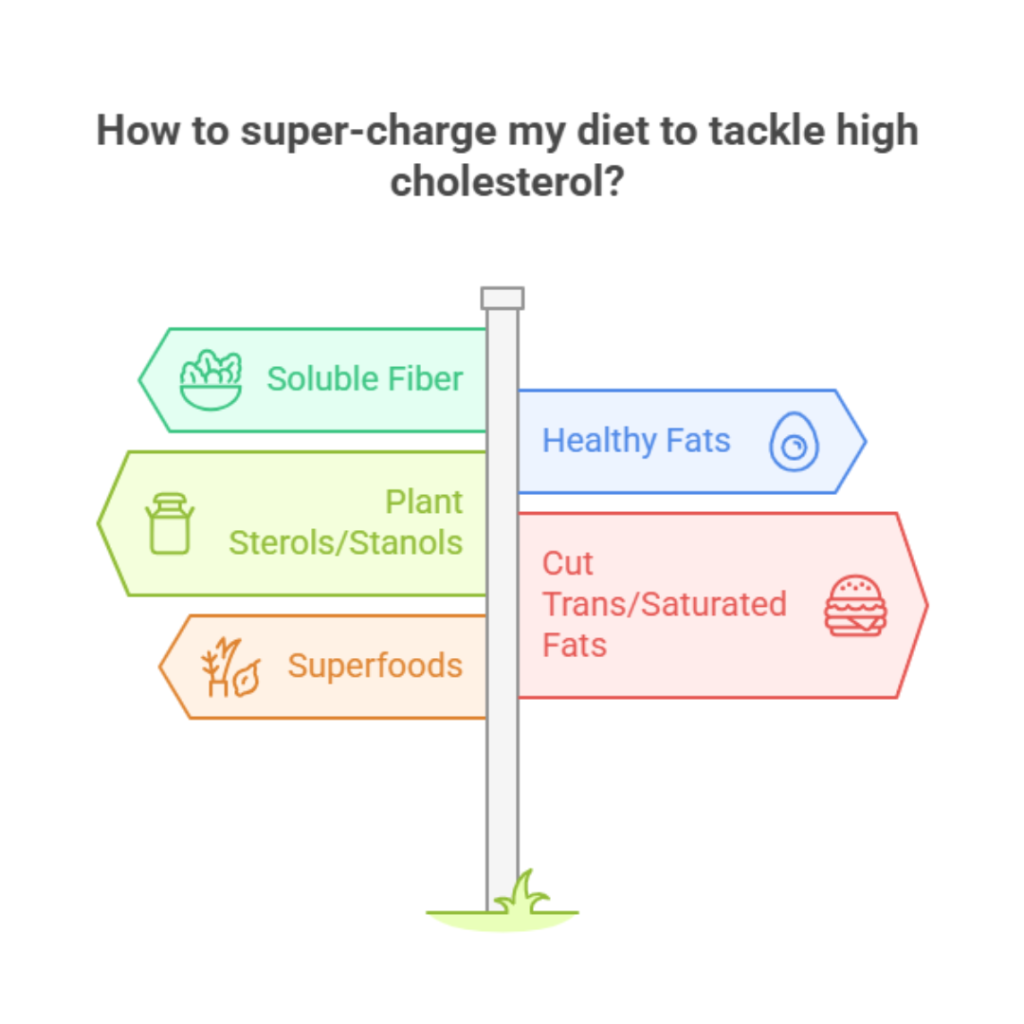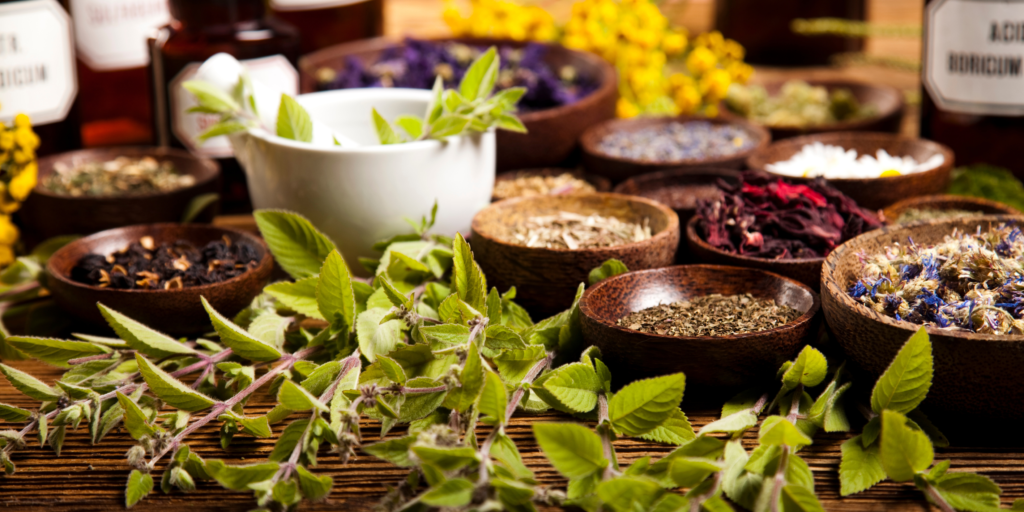High cholesterol is a silent but serious health concern that affects millions worldwide. To understand it better, it’s important to know the two main types of cholesterol: LDL (Low-Density Lipoprotein), often called “bad” cholesterol, and HDL (High-Density Lipoprotein), known as “good” cholesterol.
While your body needs some cholesterol to function, too much LDL can clog arteries and increase the risk of heart disease and stroke.
According to the World Health Organization, raised cholesterol contributes to 2.6 million deaths annually. The real danger lies in its quiet progression—many don’t realize they have high cholesterol until it leads to something serious, like a heart attack.
That’s why acting quickly is crucial. Under the guidance of experts like IDA Cure Dr. Neha Patel, a comprehensive and practical approach can bring significant improvement.
Five-pronged strategy that tackles high cholesterol through diet, lifestyle changes, targeted supplementation, stress and sleep management, and regular tracking. Each of these pillars plays a critical role in bringing down cholesterol levels and supporting long-term heart health.
Read More : What Happens to Your Body When You Have High Cholesterol?
Super‑Charge Your Diet to Tackle High Cholesterol

When it comes to managing high cholesterol, your plate is your most powerful tool. Small, consistent dietary shifts can have a huge impact on lowering LDL and improving overall heart health. Here’s how:
1. Load Up on Soluble Fiber
Soluble fiber binds with cholesterol particles in your digestive system and helps flush them out before they enter your bloodstream. Foods like oatmeal, oat bran, beans, lentils, apples, and pears are rich in soluble fiber.
Experts recommend aiming for 10–25 grams of soluble fiber per day. A bowl of oatmeal in the morning and a lentil salad at lunch can get you halfway there. This strategy alone can lower LDL (bad cholesterol) by up to 10%, making it a key dietary ally in the fight against high cholesterol.
2. Add Healthy Fats: Monounsaturated & Polyunsaturated
Not all fats are harmful. In fact, monounsaturated fats (found in avocados, olive oil, walnuts, and almonds) can help reduce LDL without affecting HDL.
Also, polyunsaturated fats from fatty fish like salmon and mackerel—when eaten at least twice a week—deliver heart-protective omega-3 fatty acids, known to reduce triglycerides and inflammation.
3. Eat Plant Sterols and Stanols
Plant sterols and stanols are cholesterol-fighting compounds naturally found in nuts, seeds, and legumes, or added to fortified foods like spreads and juices.
Consuming just 1.5 to 2 grams per day can lead to a 7–10% drop in LDL levels within 2–3 weeks. They’re a simple, science-backed addition to any heart-healthy diet.
4. Cut Trans & Saturated Fats
To improve your cholesterol profile, it’s crucial to eliminate trans fats completely and reduce saturated fats. Avoid processed snacks, red meats, full-fat dairy, and tropical oils like coconut and palm oil.
These fats raise LDL while decreasing HDL, making them especially dangerous for those with high cholesterol.
5. Focus on Superfoods
Certain foods go above and beyond. Chia and flax seeds, berries, dark chocolate, garlic, and turmeric contain bioactive antioxidants and anti-inflammatory properties that support heart health. Adding these to your meals not only boosts flavor but also helps your body naturally manage high cholesterol.
With guidance from specialists like IDA Cure Dr. Neha Patel, these food choices become even more effective, tailored to your individual health profile. Remember, consistency is key—your diet can either be your medicine or your biggest risk.
Read More : Hypercholesterolemia: Causes, Prevention, Effects, and Natural Treatment
Smart Lifestyle Habits for Fast Results

While diet lays the foundation, your daily habits can either speed up or stall your progress in lowering high cholesterol. By focusing on a few key lifestyle changes, you can support your heart health in a meaningful and measurable way.
1. Exercise 150 Minutes/Week + Strength Training
Physical activity is a proven cholesterol-lowering tool. The American Heart Association recommends at least 150 minutes of moderate aerobic exercise per week, like brisk walking, cycling, or swimming, paired with 2 sessions of strength training.
This combination not only lowers LDL but also raises HDL, giving your body a dual benefit. It doesn’t require a gym membership—just a regular commitment to moving more and sitting less.
2. Lose Excess Weight
Even modest weight loss can yield significant improvements. Research shows that losing just 10 pounds (about 4.5 kg) can reduce LDL cholesterol by approximately 8%.
On average, every 1 kg of weight loss reduces LDL by about 0.8 mg/dL. So if high cholesterol is your concern, trimming even a few inches off your waistline could directly improve your lab results.
3. Quit Smoking & Moderate Alcohol
Smoking lowers your HDL and makes it easier for LDL to oxidize—raising your cardiovascular risk. Quitting smoking allows HDL levels to bounce back and significantly reduces inflammation in your arteries.
As for alcohol, moderation is key. One drink per day for women and two for men may offer some heart benefits, but overconsumption reverses the gains and worsens high cholesterol.
4. Improve Sleep & Stress Management
Poor sleep and chronic stress can spike cortisol, which negatively affects your cholesterol levels. Getting 7–9 hours of quality sleep per night not only helps your body repair but also keeps LDL in check.
Mindfulness practices, yoga, and even simple breathing techniques can help manage stress, keeping both your mood and cholesterol levels balanced.
Dr. Neha Patel of IDA Cure emphasizes that lifestyle shifts aren’t about perfection—they’re about progress. Making consistent changes, even small ones, can rapidly move you in the right direction when managing high cholesterol.
Read More : The Life-Changing Benefits of Fasting Within Naturopathic Medicine
Therapeutic Eating Plans Proven Effective
When battling high cholesterol, it’s not just about cutting out the bad stuff—it’s about following a structured plan that’s backed by science. Several therapeutic diets have shown remarkable success in lowering LDL levels and promoting long-term heart health. Here are three that consistently deliver results:
1. TLC (Therapeutic Lifestyle Changes) Diet
Developed by the National Cholesterol Education Program, the TLC diet is a heart-focused plan designed to reduce LDL cholesterol through specific food and activity guidelines.
It limits saturated fat to less than 7% of daily calories and cholesterol to under 200 mg per day. Regular 30 minutes of physical activity is also a core component.
Studies show that individuals on the TLC plan can reduce LDL by 8–10% within six weeks, making it a trusted option for those dealing with high cholesterol.
2. DASH Diet (Dietary Approaches to Stop Hypertension)
While originally designed to lower blood pressure, the DASH diet also has strong cholesterol-lowering effects. It emphasizes fruits, vegetables, whole grains, lean proteins, and low-fat dairy, while reducing sodium and added sugars.
Research has shown that following DASH can lower LDL by up to 11 points and reduce the risk of heart disease in people with high cholesterol or hypertension. It’s also an easy plan to follow for families, making it practical for long-term adherence.
3. Portfolio Diet
The Portfolio Diet is a plant-based strategy specifically crafted to lower cholesterol. It includes four powerful cholesterol-lowering foods:
- Viscous fiber from oats, barley, and psyllium
- Plant sterols
- Soy protein
- Nuts, especially almonds and walnuts
When followed consistently, this diet has been shown to reduce LDL cholesterol by up to 30%, similar to the effect of some statin medications. For individuals looking for a food-first approach to managing high cholesterol, this plan is a powerhouse.
As Dr. Neha Patel from IDA Cure often reminds her patients, the best diet is the one you can stick to. Whether it’s TLC, DASH, or the Portfolio Diet, consistency and personal fit are key to achieving sustainable cholesterol control.
Read More : Foods and Eating Patterns According to Naturopathy
Natural Supplements & Remedies (Optional Add‑Ons)

While diet and lifestyle form the foundation of cholesterol management, certain natural supplements can offer additional support—especially for those seeking plant-based or traditional remedies. These options can complement your main treatment plan and accelerate results for individuals struggling with high cholesterol.
1. Plant Sterols
Plant sterols are naturally occurring compounds found in nuts, seeds, and vegetable oils. When consumed in adequate amounts, they block the absorption of cholesterol in the intestines.
Research shows that taking 1 to 3 grams per day of plant sterols can lower LDL cholesterol by 5–15%. Many fortified products, like spreads, yogurts, and juices, now include these beneficial compounds.
2. Red Yeast Rice (Xuezhikang)
Used in traditional Chinese medicine, red yeast rice contains monacolin K, a naturally occurring substance that mimics the cholesterol-lowering effect of statin drugs.
Studies suggest it can reduce LDL by 20–30%, though results vary depending on dosage and purity. However, it’s essential to use red yeast rice under medical supervision due to potential liver-related side effects and drug interactions.
3. Ayurvedic Herbs & Botanicals
India’s ancient healing systems offer a wealth of cholesterol-supportive herbs.
- Turmeric (curcumin) has anti-inflammatory properties.
- Garlic may reduce LDL and triglycerides with consistent use.
- Fenugreek, amla (Indian gooseberry), and triphala are also believed to support lipid balance, digestion, and heart health.
Dr. Neha Patel of IDA Cure integrates modern science with traditional wisdom, advising that while these supplements can help manage high cholesterol, they should be used as complementary therapies—not replacements for core dietary and lifestyle changes.
Monitor, Track & Stay Consistent
No strategy for managing high cholesterol is complete without regular monitoring. Tracking your progress helps you understand what’s working and where you need to adjust. Without feedback, even the best plan can fall short.
Test Your LDL Regularly
After making significant lifestyle or dietary changes, it’s recommended to recheck your LDL cholesterol every 6 weeks. This allows enough time for your efforts to reflect in your blood work and gives your doctor a clearer picture of your progress.
Keep a Food & Exercise Log
Journaling what you eat and how often you move might seem simple, but it’s one of the most effective tools for accountability. It helps identify patterns, pinpoint triggers, and motivate change. Even noting stress levels and sleep quality can reveal hidden factors contributing to high cholesterol.
Consider Medical Support if Needed
Sometimes, lifestyle changes may not be enough—especially if genetic factors or other health conditions are involved. In such cases, statins or other lipid-lowering medications may be necessary.
Dr. Neha Patel of IDA Cure advises having an open conversation with your physician about all available options, especially if your LDL remains elevated despite your best efforts.
Managing high cholesterol is not a one-time fix—it’s a journey of awareness, action, and adjustment. But with the right strategy, trusted guidance from experts like Dr. Neha Patel, and a bit of discipline, better heart health is well within reach.
Read More : Naturopathic Approaches to Managing Metabolic Syndrome
Sample 7‑Day Quick‑Start Meal Plan
Getting started with a cholesterol-lowering diet can feel overwhelming, but it doesn’t have to be. This 7-day meal plan, inspired by the Heart Foundation’s model plan, is designed to make the transition smooth and sustainable for anyone looking to manage high cholesterol through food.
Each day follows a simple, balanced structure:
Daily Meal Structure:
Breakfast:
Oats with fresh berries, chia seeds, and a dash of cinnamon
Rich in soluble fiber and antioxidants—ideal for starting your day right.
Lunch:
Leafy green salad with mixed beans, avocado slices, and a handful of walnuts or almonds
Loaded with monounsaturated fats, plant-based proteins, and fiber to support LDL reduction.
Dinner:
Grilled salmon or tofu with steamed seasonal vegetables and a side of quinoa or brown rice
Offers omega-3s, lean protein, and complex carbs to stabilize blood sugar and cholesterol.
Snacks (2–3 times daily):
Fresh fruit, plain yogurt, a small square of dark chocolate, or a handful of mixed nuts
These help curb hunger without spiking cholesterol levels.
This plan is a heart-smart way to kickstart progress. Within just one week, many people report feeling lighter, more energetic, and motivated to continue their journey toward lower high cholesterol levels.
Dr. Neha Patel of IDA Cure emphasizes that while no single meal makes or breaks your cholesterol numbers, consistency over time is the true game-changer.
Read More : Understanding Fatty Liver: Causes, Symptoms, and Naturopathic Treatment with Yoga
Conclusion
There’s no magic pill for high cholesterol, but the good news is that combining the right strategies can lead to significant improvement—often within just a few weeks.
Whether it’s revamping your diet, staying active, exploring supplements, or improving sleep and stress habits, each step you take builds momentum toward better heart health.
The key is to start where you are. You don’t need to change everything overnight. Maybe it’s adding oats to your breakfast or taking a 30-minute walk after dinner. Set realistic goals, track your progress, and celebrate small wins.
Dr. Neha Patel of IDA Cure encourages everyone with high cholesterol to take that first step today—whether it’s scheduling a check-up, reading a food label more carefully, or simply drinking more water. Your heart will thank you for it.
Call : 099357 64887
Address : 10B/675, Raibareli Rd, Vrindavan Colony, Lucknow, Uttar Pradesh 226025




